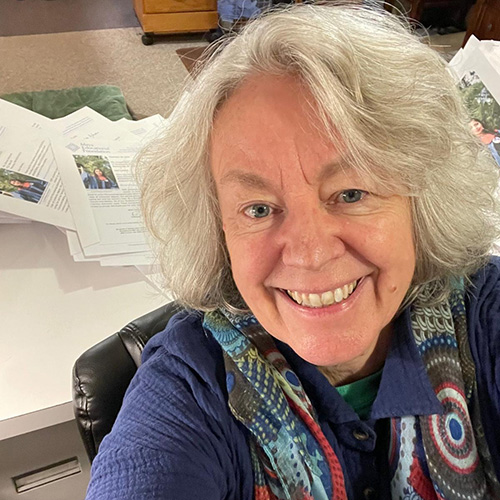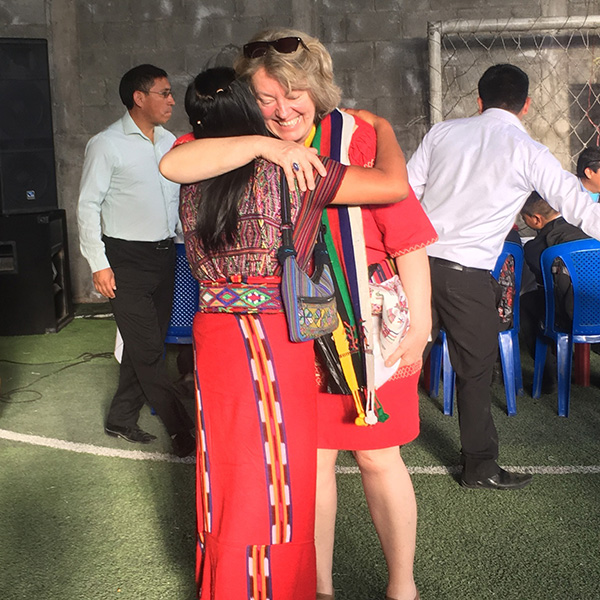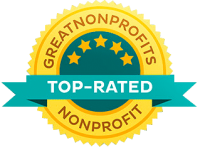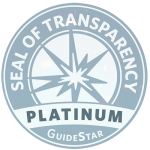
Elisabeth Nicholson worked at Maya Educational Foundation for more than three decades, and was instrumental in getting the organization to where it is today. Before retiring, Elisabeth sat down with Amy to talk about some of the most memorable moments at MEF.
Q. When did you take on the role of Executive Director at MEF?
I started at MEF in January 1992 and took on the ED role in May 2010, after the main office in Vermont was closed due to financial reasons. They could not afford to keep it open anymore. All of a sudden, from a staff of four or five people, it had to contract to just myself with the help of an outside bookkeeper.
Q. So tell me, how has the organization changed over the last three decades?
In 2007, we became a public charity which was a triumph. It took several years to prepare for it, and there was a probationary period to go through, to be accepted by the IRS.
In terms of programming, there has been a lot of development. In the early days, we supported book printings, library constructions, a radio station… we supported a gamut of things. We were very colorful until at some point we said “let’s concentrate our efforts”.
We decided to concentrate on what we really wanted to do the most, and we agreed it would be university education. We also preserved about three programs that had very deep cultural meaning to us in terms of helping languages to survive that were threatened by extinction. Some people still spoke those languages, but nobody knew how to write them or read them. So that made us support Sna Jtz’ibajom, in Chiapas; Colegio Paxil in the highlands of Guatemala; and CIRMA in Antigua Guatemala.
At Paxil, most of the students were Ixil speaking, both boys and girls were learning how to do backstrap weaving, they celebrated the Mayan calendar and they were emphasizing culture and language. In Mexico, our partner Sna Jtz’ibajom is a venerable 40-year-old organization, that goes into communities and teaches how to read and write Maya languages. And then, of course, CIRMA, Centro de Investigaciones Regionales de Mesoamerica, is a stellar organization that preserves photos, documents and books.
Q. And why did the board, with your influence, decide that the university part was so important?
Because with a scholarship, even girls were saying that they could try to go. We always wanted at least 60% of girls in our programs but when we started, there were very anxious girls that were totally stressed out about traveling to the city.
Over time, their self-confidence and expectations about being able to do it changed. They started believing that they can go further than middle school or elementary school and the families also encouraged their girls to go.
One father made me so happy. He said, “I have three daughters and I didn’t want them to go to school really. But now I changed my mind.” And he was almost crying, telling us how happy he was.
I also remember that at FEP Maya, they had only a few open spots for university and they had 2000 applications! So, there’s a huge need for scholarships.
Q. You must have seen lots of graduates, people become professionals and changing their own communities. Can you talk about that?
Well, we’ve seen people excel in many ways. One graduate became the mayor of his community. We have graduates who’ve gone all the way to government; we’ve had lawyers galore and a woman who became a successful chemical engineer.
We had the dentist in Chiapas who opened his own clinic; a woman who opened a physical therapy clinic and keeps learning more and more techniques to help people with their bodies, adjusting them and so on. One woman became a doctor and she gave a speech in the Northwest here in the United States and was a complete hit.
Our own staff members are graduates from the programs; Norma has her own business and supports a weaver’s group and Jacqueline started her own small non-profit.
Q. Do you have any memories that you’d like to share from your site visits?
Well, because we thought that we need to go places where no-one else goes, we took crazy trips down crumbling roadways, falling down into an abyss.
People who had nothing tried to share food with us. Women weavers with newborn babies in smoky little huts, were so friendly and gave us luxury in form of a Coca-Cola bottle and there were so many other really generous, heartwarming encounters.
One site visit I remember was so touching. They drummed up the whole school, the parents and the mayors of the town. It was overwhelming and students were trying to give me gifts. I said, “no, I don’t need anything else!”, but it was humbling to say the least and I loved to talk to them.
I remember another trip where almost every second person we met was called Montego!
I realized in those small towns how that works and not even blood related, but they have those last names in common often. At the house of one of the supervisors there were three generations, a few animals, and an elderly mom using a comal stove. Honoring tradition and elders is something we could all learn from, I think.
Q. So where would you like to see MEF in the next 10 years or 20 years?
I think it would be great to build the network between students. I would love to see mentoring across all of the programs and cohesion between students that are all over Guatemala. It’s also an important goal to promote the idea of giving back, and helping someone else.
Q. What are you excited about for your next chapter in retirement?
I’m looking forward to walking more and spending more time with friends and loved ones. To be more in tune with my husband, to take care of his health and mine and spend more time with my dog, read more, see more movies, live more.
The MEF Team, Board of Directors, and past and present students extend an enormous thank you to Elisa for her tremendous service to the Maya communities of Guatemala, Mexico and Belize.




Pingback: Newsletter 2025-2026 - Maya Educational Foundation